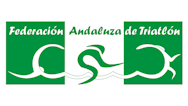Cycling Safety
IMPORTANT INFORMATION
Cycling on the race courses during other competitions is forbidden. If an athlete cycles on the course during a competition that is not participating, he/she may be removed from the start list of his/her next competition.
No refund will be provided.
Times will be communicated when non-competing athletes cannot access the race course.
PERSONAL SAFETY
Prior to departure, please do make sure your closest back home know where you are and what to do if something bad happens (hopefully not!). As for those who come with you to Torremolinos, friends and relatives, they should also know what to do and who to contact back home in case of an accident, for example.
Cycling in Torremolinos: on the road, please ride always in single files. Cyclists must abide by traffic regulations and rules on the road. Be aware! Your cycling training is at your own risk.
These are some aspects to be taken into account regarding road rules for cyclists:
BEFORE STARTING YOUR RIDE ON THE ROAD
Look backwards to check there are no other vehicles coming along or that they are faraway.
It is also compulsory to signal your future movements to other road users (motorists, pedestrians, etc.) by extending your arm, horizontally, at the level of the shoulder.
WHEN RIDING IN THE CITY
Please, ride as close to the right side of the road as possible to allow other motorists to overtake.
If you cycle in a group, you can cycle two abreast but never more.
In case of bad weather, poor visibility or traffic congestions, ride in single files.
RIGHT OF WAY OF CYCLISTS
If riding along a cycle path, a crossing for cyclists or a properly signalled shoulder, cyclists have right of way in detriment of other motorists.
Cyclists also have right of way when the motor vehicle about to take a turn, to the right or the left, aims to enter another carriageway and the cyclist is very near or when cyclists are riding in a group and the leader has initiated the manoeuvre to cross or has entered in a roundabout.
CYCLISTS HAVE TO YIELD THE RIGHT OF WAY
Before a signalled zebra crossing or just before turning to enter another lane and there are pedestrians crossing, even if there is no zebra crossing, cyclists have to yield the right of way to pedestrians and oncoming traffic.
WHEN APPROACHING A CROSSING OR A JUNCTION
Right of way will always be verified, respecting the signposting:
A police officer with the arm vertically raised or with the arm or arms extended.
Also, when you see a traffic light sign or signal, for example the red light or the non-flashing yellow light at the traffic lights, unless the cyclist is so close of the place where he/she is meant to stop and, thus, he/she cannot stop safely before the traffic lights. Or also before a stop sign where the cyclist must stop, or before a vertical yield sign if other motorists or pedestrians have right of way.
IF YOU NEED TO STOP O MAKE A SUDDEN STOP

Hand signals must be used to warn the other road users by lifting your arm, up and down alternatively, making short and fast movements.
RIGHT TURN

Please keep to the right of the carriageway and check whether it is safe to turn right (check the position of other motorists on the road); give an appropriate arm signal when you wish to turn (early enough and with the right arm bent upwards and the palm outstretched), or else, with the right arm horizontally and the palm outstretched downwards.
LEFT TURN

ONE-WAY STREET:keep as close to the left edge of the street as possible and give an appropriate arm signal early enough (the left arm horizontally extended at the level of the shoulder, the hand outstretched downwards or the right arm bent upwards and the palm outstretched).
DOUBLE-WAY STREET: respect the centre line or median, and if there isn’t any, bear in mind the axis of the carriageway. Never swerve into the opposite lane (oncoming traffic).
A LANE HAS BEEN ADAPTED FOR THIS TURN: either urban or inter-urban, riders must take this lane, ASAP, and turn when traffic signalling allows it.
THE INTER-URBAN CARRIAGE HAS NO ADAPTED LANE: to take a left turn, riders must keep to the right, outside the carriageway if possible, and from this position take the turn left when it is safe to do so.
WHEN RIDING ALONG INTERCITY/URBAN LANES
Use ALWAYS cycle lanes and cycle paths if they are available. They will mostly be signposted.
If there are no cycle lanes and/or cycle paths, keep to the right side (hard shoulder) of the road when practicable and/or wide enough, otherwise, just cycle on the carriageway but do not take more room than needed.
Cyclists can only leave the hard shoulder in a prolonged descent with curve if it is safe to do so.
OVERTAKING
Before overtaking, please make sure:
• The road is sufficiently clear ahead (no oncoming traffic or too far away);
• There is a suitable gap in front of the road user you plan to overtake.
Overtake only when it is safe and legal to do so. You should:
• Not get too close to the vehicle you intend to overtake.
• Move quickly past the vehicle you are overtaking, once you have started to overtake. Allow plenty of room. Move back to the right as soon as you can but do not cut in.
• Give motorcyclists, cyclists and horse riders at least as much room as you would when overtaking a car.
Please, warn other road users early enough and check there is plenty of room to overtake without putting in danger oncoming motorists. The law when overtaking: 1.5m is a minimum safe distance for overtaking in slow moving traffic. If you cannot allow the minimum distance, do not overtake until you can! SAFETY COMES FIRST!
It is not considered “overtaking” when a cyclist overtakes another cyclist when riding in a group.
RIDING ON MOTORWAYS AND/OR HIGHWAYS
As a general rule, cyclists are banned from riding on motorways and/or highways. SAFETY COMES FIRST!
Ride the course: we recommend you ride the competition course (when possible) to become more familiar with it!
Medical issues: during the races, injured or ill athletes will be assessed and admitted to the Medical Tent should the medical staff deem it appropriate. If an athlete is taken to the referenced hospital (TBA), the related medical costs will be paid directly by the athlete. The medical staff will do their best to get the athlete back on his/her feet as soon as possible.
*IMPORTANT. All athletes must have their own insurance policy with international coverage.
https://www.dgt.es/muevete-con-seguridad/viaja-seguro/en-bicicleta
https://www.dgt.es/comunicacion/noticias/20-normas-que-todo-ciclista-debe-conocer/



















